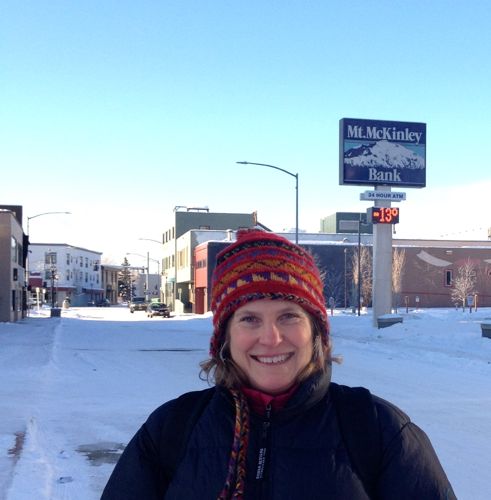I've finally arrived at PolarTREC training here in beautiful, and cold, Fairbanks, Alaska! Getting to this training was far from easy- it took a very focused desire, a lengthy application and interview process, and 3 plane flights to get myself here. I am eagerly anticipating a long and adventurous road ahead... Said one veteran teacher to me: "You look like you belong with us!", which was a wonderful welcome to the program.
On my way here, I stopped in Seattle, where I met Regina Brinker, another California teacher, and together we had a 2 hour layover in Anchorage, which was plenty of time to check out the beautiful native arts collection upstairs in the airport and meet one of the PolarTREC researchers, Steve Okkonen.
 Native artwork by Nathan Jackson, Tlingit Indian
Native artwork by Nathan Jackson, Tlingit Indian
So, how cold is Fairbanks? Cold!! Its been hovering between -20 degrees F and 0 degrees F. The first thing I feel when I step outside is an icy blast to my cheeks that causes me to cough if I take a deep breath. Steve told us that its so cold here that salt doesn't help to keep the roads melted, so the roads stay frozen with compacted snow.
 Lucy Coleman outside the Bank of McKinley in downtown Fairbanks, Alaska.
Lucy Coleman outside the Bank of McKinley in downtown Fairbanks, Alaska.
Its also dark! The sun rises at 9:05 am, and by lunchtime, it appeared quite bright outside, but I think that was because of all of the light reflecting off the snow. I say this because as some of us teachers took a walk at lunchtime, I noticed how long our shadows were.
 Shadows in Fairbanks at noon
Shadows in Fairbanks at noon
Do your research:
In your own words, what is albedo? What surfaces would have a high albedo, and which would have a low albedo? Think of a way to test your hypothesis!
Draw a model of the sun and the earth that would explain the reason for the long shadows in the middle of the day.


Comments